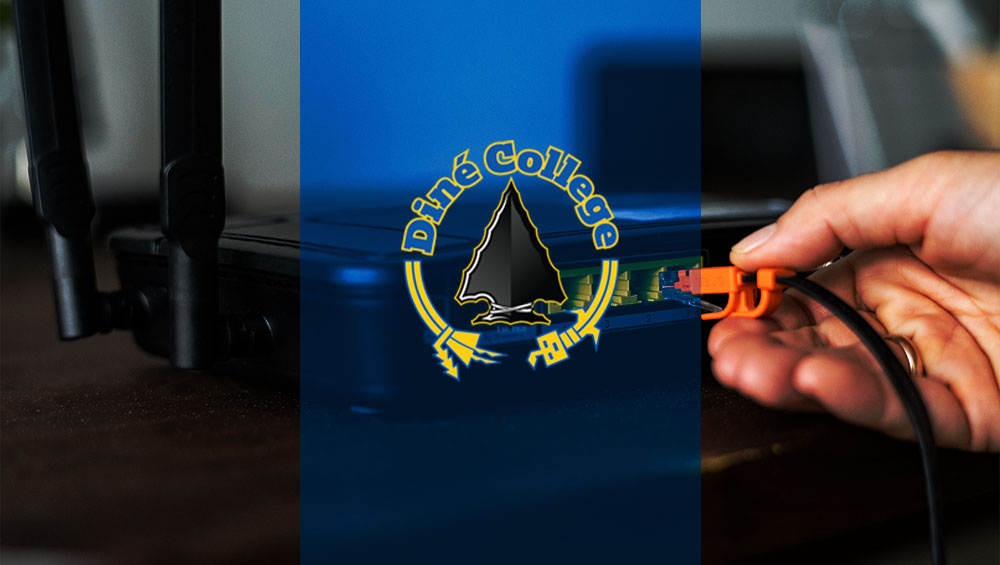
Story Snapshot
State : Arizona
Level : Postsecondary
Institution Enrollment : 2,000-15,000 students
Institution Type : 2-year, 4-year
Related Tags : Digital Equity
Related Stories
Digital Equity Champions for All Learners: Diné College Uses Culturally Responsive Strategies to Support Inclusion across the Navajo Nation
Diné College is the first tribally controlled college in the United States. The college serves the far-reaching rural needs of the 400,000-member Navajo Nation, including 200,000 citizens beyond the Nation’s borders, through its main campus in Tsaile, AZ and six additional campuses and microsites across Arizona, New Mexico, and Utah.
Diné College’s challenges in addressing digital equity are geographic and structural. Dr. Monty Roessel, president of Diné College, believes solutions must both address the realities of the Navajo Nation’s rural topography and be culturally responsive by incorporating Navajo communities’ voices. “More than half of the Navajo people live off the reservation. They live in border towns. They live in metropolitan areas like Phoenix, Albuquerque,” Dr. Roessel explained. “We are changing [our aim from] … ‘We serve the Navajo Nation’ to ‘We serve the Navajo people.’ We’re trying to expand more on the reservation and ask, ‘What programming can we provide the Navajo people off the reservation?’”
Engaging Navajo communities results in more community-oriented solutions that better address specific needs, such as language and cultural preservation. To address these needs, Diné College implements a community-based, boots-on-the-ground approach to promote digital equity. For example, the college employs Navajo IT staff to continuously assess connectivity and access challenges across Navajo households. Diné College also works with a consortium of peer institutions and community organizations to collectively solve community issues and advocate for shared goals.
Because internet access has had an impact on college enrollment, Diné College utilizes microsites to provide geographically dispersed access points to the internet, IT services, and technical assistance. Providing connectivity via the microsites has led to a 17 percent reduction in travel times for students, enabling them and other community members to reinvest their time and resources toward other needs.
Diné College further supports student retention by addressing their digital learning needs. Based on community feedback, Diné College adopted a learning management system widely used by local K-12 schools to ensure incoming students are familiar with the college’s digital tools, thereby increasing course and program completion. Additionally, an instructional designer regularly surveys students and faculty for feedback on how content design can be improved. Because tribal college graduates are more likely to stay within their communities, these investments reinforce Diné College’s larger efforts to support Navajo Nation.
Using digital tools to preserve Navajo language has also positively impacted efforts to sustain Navajo culture across the community. Diné College capitalizes on technology’s connective and social affordances by offering Navajo language classes online, reaching a wider audience, including those outside the Nation’s boundaries. According to Dr. Roessel, this strategy is important to combat cultural and linguistic preservation challenges stemming from the physical and historical displacement of Navajo communities: “Everyone should have an opportunity to learn what is important in their community… we can utilize technology in a way that provides connection to culture and language.”
Since implementing these strategies, Diné College has seen enrollment increase by 30 percent, making significant strides towards its goal to serve 3,000 students by 2030. Looking forward, the college will continue developing faculty in remote instruction, including practices that create a sense of belonging in-person and online.
Dr. Roessel shared the following advice for organizations looking to support digital equity in culturally responsive ways: “One of the things I learned, more than anything, is to listen to the students and bring them purposely into conversations. Listen to those people that are not used to sitting at the table. Too often we just listen to ourselves. It goes back to the idea [of considering], ‘Are we even trying to solve the right problem?’”


